
The Bullet:In
By Hi-Lux Optics

The Bullet:InJun 02, 2022

The Long Life of the M40 Rifle
The M40. A revered name with few variations throughout history - the M40, M40A1, M40A3, M40A5. In the fifty years since its inception, the Marines’ update to the Remington 700 system has stood the test of time with its durability, simplicity, and hard-hitting rounds. The goal, as with most long-range platforms, is a consistent first-round hit. That’s not to say that every shot will be taken at extreme range... but it’s useful to have a rifle capable of delivering that level of accuracy.
At the time of the Vietnam war, the only suitable rifles for such a purpose were old holdovers from World War II and Korea. Commonly, this meant a 1903 with 8X Unertl (Model 1941) or scope-mounted M1C and M1D Garands. The Army went on to develop the M14 further, yielding the XM21. The Marine Corps decided to take a different approach.
We hope you’ve enjoyed this look into the world of firearms. If you’d like to view this in a different format, it’s available in other convenient locations. To read the blog, stop by our website.

Competition Mindset - Interviews from Camp Perry's CMP National Matches
Getting ready for a match? Trying to get over a bad shot at the last one? Open an ear and listen to advice from shooters at the National Matches, held each summer at Camp Perry. While everyone has their own spin on it, everyone agreed on something: The next shot is the one that matters. The last one already happened and can't be changed, so don't beat yourself up about it. The one in the chamber is the one that counts. Don't add to the stress and emotion by overthinking it.
The interviews are from the 2019, 2021, and 2022 National Matches. Interviews were conducted on-site at the 2022 matches - sorry about some of the gunfire in the background.
00:00 Introduction
Let's get a look at all the people in the video. Shoutout to @Konrad @Marines @The U.S. Army @National Guard @U.S. Army Reserve @Civilian Marksmanship Program @The Marine Corps League @Creedmoor Sports And to everyone else that I wasn't able to tag here!
00:30 Getting Ready
How do you get into the right mindset to shoot a match? This is pretty darn close to meditation. Stare at the target, don't think about it, don't get excited. The sort of problems that come about due to nerves are only going to make your nerves worse. Each shot is its own shot. Focus on the basics, remember your practice.
05:42 Return to Calm
What happens if you drop a shot and get flustered? The idea is largely the same - focus on the next shot. The last shot has already happened, and there's no time travel alibi in matches. The next shot in the chamber is the only thing you can control. Put all your focus on that, and leave emotion behind the ready line.
08:54 Pep Talk
John Schwent from Camp Valor Outdoors has a solid message about the shooting mindset. These are points covered by nearly everyone we spoke to... except here they're condensed into a few minutes of pure knowledge and experience. Remember - it's not a 50-shot match, it's 50 1-shot matches.

The Long History of the 1903 Rifle
The 1903 is a rifle. Chambered in .30-06 (‘thirty ought six’), it’s made of wood, metal, and a firm butt plate and weighs a bit over 8 ½ lbs. It’s a bolt action rifle that has been around since (you guessed it) 1903. Originally named the “United States Rifle, Caliber .30-06, Model 1903”, it’s now colloquially (and officially) named the “Springfield M1903.” 1903 for short.
In this episode, I'll be walking through the many stages of development that the Springfield M1903 has gone through, from its initial roots in the early years of the 20th century, on through life as the 1903A1, 1903A2 (very briefly), 1903A3, M1941 (with a Unertl 8X or Winchester A5), and 1903A4 (with the M73, M81, or M82). This rifle has seen many years of service and innumerable alterations, from ammo (.30-06, M1, M2), to the stock (straight, scant, type C), to the barrel (4 groove, 6 groove, war emergency 2-groove).
If you've got a love for old wood guns, this is something you'll likely already be familiar with. I hope you find something interesting in here.
We hope you’ve enjoyed this look into the world of firearms. If you’d like to view this in a different format, it’s available in other convenient locations. To read the blog, stop by our website. For the video version, take a peek on our YouTube or Rumble.

The Mann Accuracy Device
For most of the shots you take with a rifle, you, the ‘squishy human component,’ are responsible for much of the lost accuracy. The rifle and ammunition have their own inherent precision, and their own chance of sending a shot wide. Normally, though, your positioning, trigger pull, timing, and a whole host of other factors are responsible for sending a shot to the wrong place.
Now imagine that we’ve removed the human from the equation. The rifle’s going to be held by something else, so your shoulder and hands don’t need a stable platform. Remove the foreguard and most of the buttstock. The point of this rifle is repeatable precision testing. You don’t need to aim for this, as long as the rifle stays pointed at the same spot for each shot. Remove the sights too.
This is the idea behind a Mann Accuracy Device. It was named after ammunition tester Dr. F. W. Mann.
--
We hope you’ve enjoyed this look into the world of firearms. If you’d like to view this in a different format, it’s available in other convenient locations. If you’d like to read the blog, you can find it on our site. For the video version, take a peek on our YouTube or Rumble.

(Almost) Olympic Pistol Dueling
Believe it or not, there was a time when two competitors would do their best to shoot each other as quickly as possible to win a medal. Let’s find out more.
I’d like you to travel back in time to 1908. The Olympics are being held in London, and the demonstration of a potential new sport is taking place. Off on the field meant for a later display of fencing, Walter Winans and a smattering of professional pistol duelists were meeting to shoot each other for sport - with an audience. Winan’s demonstration, held conveniently close to the Olympics in both time and space, was actually part of the Franco-British Exhibition celebrating the Entente Cordiale signed between Britain and France. To celebrate this historic accord between the two countries, competitors from America, Belgium, and France were planning on shooting at each other.
In Winan's own words - “Some people tell me that shooting at a stationary target improves their snap shooting. I am glad to hear it and only wish that I could say the same thing about myself. They cannot, however, blame me for stating that, from my own experience, I have come to a different conclusion.”
---
We hope you’ve enjoyed this look into the world of firearms. If you’d like to view this in a different format, it’s available in other convenient locations. To read the blog, stop by our website. For the video version, take a peek on our YouTube.

Early Reflex Sights
This story starts with a question, as some stories do. Today’s question is simple: If you saw a photo of someone using a reflex sight in the year 1900, would you think they were a time traveler? Before looking into the history of red dots, I certainly would have.
The story starts with Howard Grubb, a son born into an already-prominent telescope family. Under the name of the Grubb Telescope Company, Howard went on to build refractor telescopes for a number of observatories across Europe, powered by his family’s electrically driven clock drives. In 1900, Howard premiered his latest invention - a reflective sight for small arms.
Before too long - and not long before World War II - French forces began adopting the reflex sights for their bombers and fighters. In the 1930s, this technology became a little more widespread, and other airforces began adopting the same.
The Nydar Shotgun Sight gained fame in 1945 for its use on… well, shotguns. This was a remarkably simple contraption, converting Howard’s closed design into a more modern open reflex configuration.
1947 saw the creation of the Giese electric gunsight. The Giese sight had a battery-powered illuminated reticle.
--
We hope you’ve enjoyed this look into the world of firearms. If you’d like to view this in a different format, it’s available in other convenient locations. To read the blog, stop by the website. For the video version, take a peek on our YouTube.
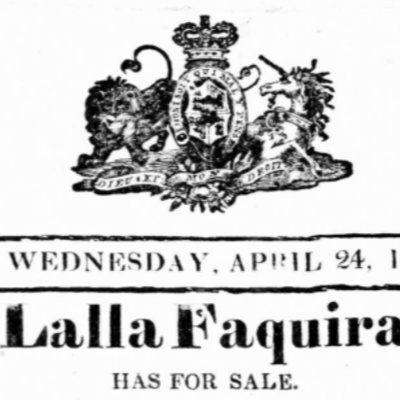
A Collection of Strange and Exciting Stories
When I do research for episodes and articles, I like to dig into the original source material. Newspapers, journals, photographs, anything from the time period I happen to be looking into. Every so often, I’ll come across an old article that seems far too interesting to just leave behind. I’ve gathered up a few segments here that never made it into a podcast episode, though they may at some point in the future.
I hope you enjoy this rather unusual collection of stories, mostly from the 1800s.
The articles today:
- A letter by British officer Joseph Graham, in November of 1781, recounting a conversation with Daniel Morgan
- “The Anderson Intelligencer,” in April of 1906, in an article titled, “Daring Deeds of a Scout.”
- The Journal (of New York) in January of 1896, in the article titled, “The Whole World Endangered by New York City Scientists; Deadly germs in incredible numbers carefully cultivated in local laboratories.”
- “The Morning Times,” January 3rd, 1897, an article titled “No Sea Girt Team.”
- “The Iola Register”, in March of 1899, in an article titled, “A Thrilling Tale.”
- “The English Review,” dated September of 1920, in an article titled, “British Snipers; An Account of the Training and Organization of Snipers in the British Armies in France.”
- “Daily Union,” in November of 1848, an advertisement
--
We hope you’ve enjoyed this look into the world of firearms. If you’d like to view this in a different format, it’s available in other convenient locations. To read the blog, stop by our website. For the video version, take a peek on our YouTube.

The Early Chronograph - Pendulums, Paper, and String
When you hear the word chronograph, what do you picture? Do you see a watch, hung on a chain in someone’s pocket? I do too. But for the purposes of this story, we’d both be wrong.
I’m here to talk about the kind of chronograph used to judge bullet velocity.
Still, for the purposes of this story, time, distance, and velocity are all important… so we’re also going to talk about telling time too. But not with watches.
For a great deal of time, firearms were shot with little knowledge of just how fast the bullet was going. In 1742, Benjamin Robins set out to find that knowledge with a pendulum and a dream. Before too long, Grobert’s pair of wheels took over as the go-to method for judging velocity. Then Reverend Francis Bashforth devised a long series of strings that could tell artillery operators how projectiles were flying down range.
Long before the optical, magnetic, or radar chronographs, these early mechanical designs achieved surprising accuracy using complex math and simple physics.
--
We hope you’ve enjoyed this look into the world of firearms. If you’d like to view this in a different format, it’s available in other convenient locations. To read the blog, stop by our website. For the video version, take a peek on our YouTube.

Lewis and Clark and a Mysterious Air Rifle
Once upon a time, a peculiar gun worked its way westward on a journey of exploration and discovery. It didn’t kill a single person, but still proved its worth in safeguarding and hunting for its owners.
But enough euphemism and allusion - The owners were Lewis and Clark, and the rifle was a Girandoni Air Rifle.
Yes, you heard that right. The Lewis and Clark Expedition, fielded in 1804 at the request of president Thomas Jefferson, was armed with an air rifle originally designed in the late 1500s.
The entire 22-ball magazine could be emptied in under a minute. Just - tilt, squeeze, cock, aim, fire, and repeat. By many accounts, the rifle was accurate out to 100 yards. Compared to the muskets of the time, this sort of smokeless, long-range rapid fire must have been pretty astounding. The Austrian military made use of the Girandoni air rifles for a few decades, and for a while past that in the hands of their sharpshooters. The soldiers enjoyed being able to reload by simply tilting the rifle up from a prone position, rather than having to stand up themselves.
Twenty-three years later, Meriweather Lewis would pick one up in Pittsburgh. The rifles were supposedly kept in storage by the Austrian military until 1806, but at least one made its way across the Atlantic in time for a purchase on American soil. As far as survival rifles of the time could go, a field-ready kit that contained everything down to the bullet mold seemed like a reasonable choice.
--
We hope you’ve enjoyed this look into the world of firearms. If you’d like to view this in a different format, it’s available in other convenient locations. To read the blog, stop by our website. For the video version, take a peek on our YouTube.

Rubber Recoil Pads for Sore Shouldered Shooters
The 20X Malcolm scope is here. I have been waiting for this - and I finally get to put one on my rifle and take it out to the range. It comes equipped with the competition mounts featured on our 8X Gen ii, along with a completely redesigned scope tube. We’re talking more length, a bigger objective, and a parallax adjustment reminiscent of the old Unertl 20X’s.
Now what the heck should I mount it on?
I’d also like to congratulate the Dow Arms Room for the impressive efforts of their shooting team. At a recent match, they had too much fun showing off what their garands could do. I’d like to see their collection of medals some time.
And in other news, I’ve finally been catching up on Brandon Herrera’s 50-cal AK videos. All I can really say is - don’t try it at home, but certainly watch it at home. They’re exactly as ridiculous as it sounds.
And for our main story:
When I first started looking into the history of Metal Butt Plates, I didn’t quite know what I might find. Pretty quickly, my research turned toward the development of rubber recoil pads. Everything I was reading was highlighting the simple fact that shooters of ‘ye olden times’ had precisely the same concerns - and inventiveness - as the shooters of today. In the case of metal and rubber butt plates, the concern was one I’m sure many of you are familiar with: high recoiling long arms hurt less when there’s a cushion for your shoulder.
Our story picks up in 1874 with the Silvers Company of England, and ends around 1930 with a name I’m sure many of you are familiar with: Pachmayr. A bit of a spoiler alert: These bruised-shoulder shooters solved the serious concerns of considerable kick, even way back then.
Through ingenuity and a desire to shoot without flinching, they went through every variation of recoil pad you can imagine. From the first solid rubber pads bolted onto the backs of shotguns, they worked the shape and structure to increase its effectiveness. They tried springs, they tried air. They had buttplates with adjustable height and carvable shape, set atop spacers to perfectly fit the stock to the shooter. In essence, the shooters of old did exactly what shooters today are still doing - find a way to make recoil manageable.
I hope you enjoy this walk through the turn of the century, as the advent of shotgun cartridges enabled people to shoot high-recoil long arms more often than ever before.
---
We hope you’ve enjoyed this look into the world of firearms. If you’d like to view this in a different format, it’s available in other convenient locations. To read the blog, stop by our website. For the video version, take a peek on our YouTube.
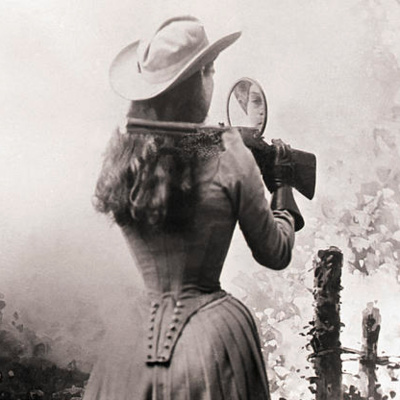
Vaudeville Rifle Trick Shots - Oakley and more
Oakley.
I’m not talking sunglasses here. I’m talking Wild West legend Annie Oakley, famous for being able to shoot a lot of things very quickly, without missing too many shots. She was a nationally-renowned trick shooter, firing her rifle upside down and backwards dozens of times in succession, in the days when hearing protection was only just invented.
Annie and other trick shooters of the time were living large as the Wild West was closing up shop. According to the Census Bureau of the time, the frontier closed resoundingly in 1890. The Wild West was, according to the numbers, decidedly less Wild. Its former role as the release valve of America, a place where settlers could start over or start fresh, was coming to an end.
And far be it from its inhabitants to reminisce about the Wild years for entertainment.
For our entertainment, however, we’ll be looking at the sort of post-Wild-West feats that could earn you critical acclaim on the vaudeville stage and in towns across America.
Contrary to modern shooting competitions, the purpose was not to achieve the most minute precision. You didn’t have to put 10 shots through one hole - mostly because the audience in the stands wouldn’t be able to see them a great distance away. Instead, the goal was simple. Hit as many breakable things as possible - and bonus if they were in motion. Even more impressive if you could keep hitting targets for a whole day.
As the Wild West slowly changed into the Midwest and Southwest of the nation, the vaudeville scene was alight with gunslingers claiming to be the best. To wow the audiences and earn some notoriety, these trigger-tapping top gunners fired relentlessly at tiny targets tumbling through the air. Though it’s unlikely that we’ll see many shows like Buffalo Bill’s in the modern age, it’s fun to look back and marvel at just how much ammo they were willing to expend in the name of fame.
--
We hope you’ve enjoyed this look into the world of firearms. If you’d like to view this in a different format, it’s available in other convenient locations. To read the blog, stop by our website. For the video version, take a peek on our YouTube. Don’t hesitate to drop by our instagram, @leatherwoodoptics.
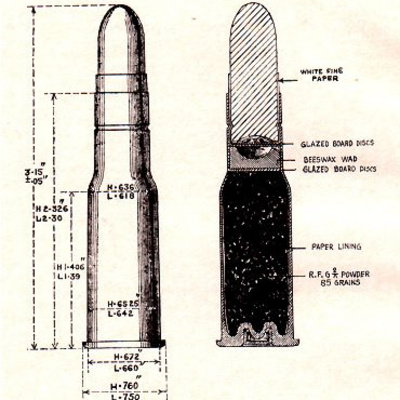
Shooting Two Miles in the 1800s
Imagine, if you will, two miles of sandy beach. At one end is you, with a selection of rifles featuring prototype cartridges and heavyweight bullets. At the far end is your target, up to 3200 yards away. The target is made of wood, layered in one-inch thick sections. The goal is to test bullet penetration at great distance, which now means you have to hit the darn thing. Repeatedly. Without a scope. This was the job for Mr. R. T. Hare of Springfield Armory.
While it may not be impressive to hit a 44-foot-wide target at two miles today, finding this out in the late 1800s laid the groundwork for later machine gun fire.
--
We hope you’ve enjoyed this look into the world of firearms. If you’d like to view this in a different format, it’s available in other convenient locations. To read the blog, stop by our website. For the video version, take a peek on our YouTube. Don’t hesitate to drop by our Instagram for more photos, @leatherwoodoptics.
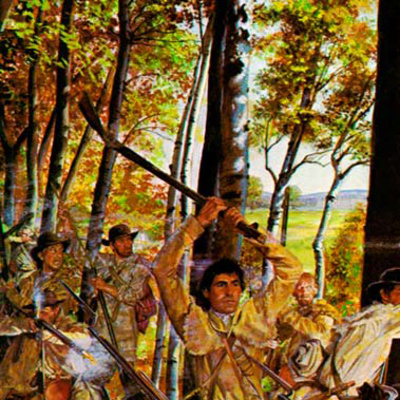
Revolutionary Sniping of the 18th Century
The California DA George Gascon sent letters to credit card companies this week, urging them to block payments for ghost guns. I’ll read directly from their definition: “Ghost guns are firearms kits sold mostly on the internet for approximately $350 to $500. The set of tools that arrives by mail can be assembled into a working firearm.” I believe that this definition would technically encompass muzzleloader kits, but I’m not a lawyer.
However, I am someone who would like to highlight a portion out of the letters to Amex and Visa, both versions of which frustratingly share the same typo, “Ghost guns are cheap and not particularly durable or especially accurate. There is no discernible advantage to purchasing them, other that the lack of meaningful background checks and lack of registration requirements.”
So let me ask you all this - What has your experience been with 80% lowers or polymer kits? Are they indeed not particularly durable or especially accurate? Drop us a comment. I’m curious.
--
For almost as long as lead has flown in war, some people have been sending it just a little farther and with a little better precision. Known by names such as sniper or sharpshooter, these long-range renegades have been making their presence known for quite a long time.
At a time when rifling and breech-loading was just being implemented in military weapons, the old habits of promiscuous fire still reigned supreme. Though most troops would still fire in wild volleys, hoping to hit someone on the other side, a few troops on both sides of battle would aim their shots with more distinction. With greater reach and precision, it was possible to pick a target and take that sole target out. Most of the time, that target would be an officer if at all possible.
Technology and tactics have changed drastically in the past few hundred years. To simplify things, I’m going to break down these sharpshooter stories by time period. Today, we’ll be looking at sharpshooters in the American Revolutionary War. It’s important to note that scopes didn’t get mounted on rifles in numbers until the mid 19th century - everything you’re about to hear happened under the power of human eyes.
--
We hope you’ve enjoyed this look into the world of firearms. If you’d like to view this in a different format, it’s available in other convenient locations. To read the blog, stop by our website. For the video version, take a peek on our YouTube.
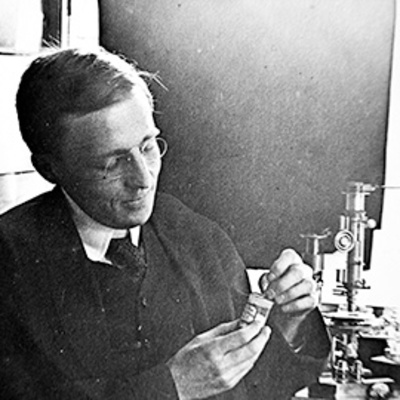
An Early History of Rifle Scopes, 1776-1930
Shot show was a delight. It was great having the chance to meet so many people and take a look at some of the wonderful new equipment coming out this year. I have to tip my hat off to our neighbors at SWORD Defense Systems, who had great fun showing off their robotic dog. I’ll have you know there was much discussion of the Terminator franchise following the dog’s sighting.
The TD-3C will be ready to ship in just a couple short weeks. We’ve had a great deal of fun designing and testing it, and I think you’ll enjoy using it too. Built on our TD3 platform, this version features a user-selectable circle dot reticle.
And finally, I’d like to find out from the NRA rifle instructors in the crowd what that process was like. I’ve had the certification on my bucket list for a while and would love a look into what exactly goes on during the classes.
This episode is a little longer than normal, just due to the sheer amount of people that had a hand in many of the early scope advancements. Peale proved precision optics were possible, but painful. Chapman and James championed cold-drawn chassis. Malcolm made masterful glass coatings and commercially successful scopes. Warner and Swasey’s scopes went to war, but wrestled with mechanical issues. Winchester’s scopes went to war too, but better because of better blocks. Bausch & Lomb made good glass for a while, then great glass with Zeiss’ knowledge. Stevens stuck with domestic glass and bought Winchester tooling, but was bought by Savage and then Lyman. Fecker, friend to Warner and Swasey and Bausch and Lomb, fielded fine optics, and rings with clicks. Lyman found Fecker’s opticians to be useful hires, while Unertl left Fecker on his own.
We hope you’ve enjoyed this look into the world of firearms. If you’d like to view this in a different format, it’s available in other convenient locations. To read the blog, stop by the website. For the video version, take a peek on our YouTube. Don’t hesitate to drop by our instagram for more photos, @LeatherwoodOptics.

International Arms during the American Civil War
Shot show begins in less than a week. We’ll be in booth 15056. Make sure to stop by if you’re going to the show - or keep an eye on our Instagram for live video from the ground floor. If it’s anything like a few years ago, it’s going to be wild.
If you’ve got a chance to stop by YouTube, be sure to check out HR Funk’s latest epic hit, under the title “The Answer”. I’m already curious which direction the sequel will take.
And in other news, I’m receiving many reports that gunsmiths are getting quite backed up with work. Wait times for firearm modifications are almost matching the time it takes to find ammo on the shelf. If anyone has a gunsmith they’d like to recommend, please let the other listeners know in the comments.
Today's main story takes a brief look into just one side of international arms dealing during the Civil War. The American Civil War lasted 4 years and 27 days, stretching from 1861 to 1865. With the South being more devoted to agriculture than the manufacture of arms, how did they manage to stay so well armed during the war? The answer, as you might have guessed, lay in the trade of cotton overseas.
--
We hope you’ve enjoyed this look into the world of firearms. If you’d like to view this in a different format, it’s available in other convenient locations. For the video version, take a peek on our YouTube. To read the blog, make sure to stop by our website. And don’t hesitate to drop by our Instagram for more photos.

From Telescopes to Rifle Scopes - An Early History
CMP has announced the dates of the National Matches at Camp Perry. As I’m sure you can expect, the matches are in the middle of summer when humidity is simply astounding. Remember to bring plenty of water and a change of clothes. If last year is any example, I’ll be planning for rain too.
The Marine Corps League El Toro Detachment 017 (@mcas017) showed off what might be the most secure Santa I’ve seen this holiday. I’m sure he doubles as security when the packages are en route.
And in other news, our new TD-3C red dots are a mere week away from going out. This red dot builds on the TD3 platform with a user-selectable circle reticle. Get your optics-ready pistols and your competition shotguns ready.
And on to the main story: As ubiquitous and varied as rifle scopes are today, there was a time when a “Riffle with a Tellescope to it” was quite a sight indeed. Starting with Charles Willson Peale in 1776 and his eye-catching experiments with a rifle telescope, we’ll take a look at the early designers in the field of rifle optics. Also joining the party will be John R. Chapman and Morgan James, the creators of the 1800’s Chapman-James rifle telescope. A mere decade after Chapman-James, we get to meet William Malcolm, one of the most famous names in pre-1900 optics.
While early scopes were plagued with issues (otherwise known as learning experiences), modern scopes draw a vast amount of their design from these simple, early scopes.
From the National Eagle Newspaper of Claremont, New Hampshire, dated October 17th of 1861: “The best marksmen of the state are invited to enlist, after passing a satisfactory examination, and complying with the following test: Each applicant, when firing at a rest with a telescope rifle, at a distance of two hundred yards, to put ten consecutive shots in a target, the average distance not to exceed five inches from the center of the bull’s eye to the center of the ball.”
Do you think you could pass the original sharpshooter test?
We hope you’ve enjoyed this look into the world of firearms. If you’d like to view this in a different format, it’s available in other convenient locations. To read the blog, stop by the website. For the video version, take a peek on our YouTube. Don’t hesitate to drop by our instagram for more photos, at @LeatherwoodOptics. And you can find our entire collection of articles on our website at the blog page.

Wild West Quick Draw Duels - How Real Were They?
We’ll be at Shot Show, now less than a month away. Booth number 15056. Stop on by to take a peek at our latest creations, including new Malcolm scopes, our latest modern long-range options, and even our new spotting scope. We’ll be there all week.
I’ll also invite you to check out some of Ohio Hammer and Lever’s latest posts on instagram. A long-time shooter of old wood guns, he’s got more than a few vintage firearms that’ll have you updating your Christmas lists.
For today's main story, I'll talk about the reality of old Wild West duels. While Hollywood and the occasional novel have made much of the duel at high noon, we forget that pioneers in the old West were every bit as fond of life as we are today. They would not have been keen on standing ten paces away and firing from the hip. The best bet, when possible, was to talk. Some rather unscrupulous persons might try an ambush, to which the best response was a shotgun and some cover. Others would stay far away, using a rifle. Shootouts with revolvers did occur, but were typically spur of the moment. People would run for cover. They’d shoot around corners or over the top of a rock. They’d do everything in their power to not be 20 feet of open ground away from someone trying to shoot them.
---
We hope you’ve enjoyed this look into the firearm world. If you’d like to view this in a different format, it’s available in other convenient locations. For the video version, take a peek on our YouTube. To read the blog, stop by the article on our site. Don’t hesitate to drop by our instagram for more photos, at @leatherwoodoptics.